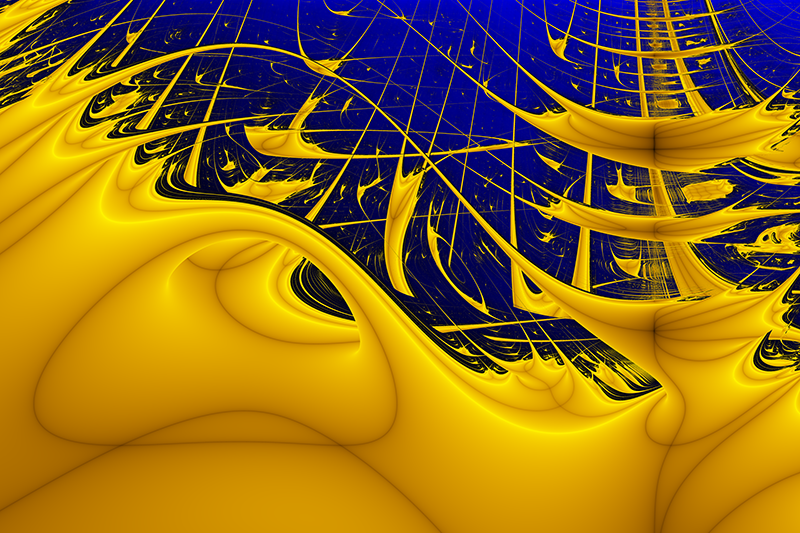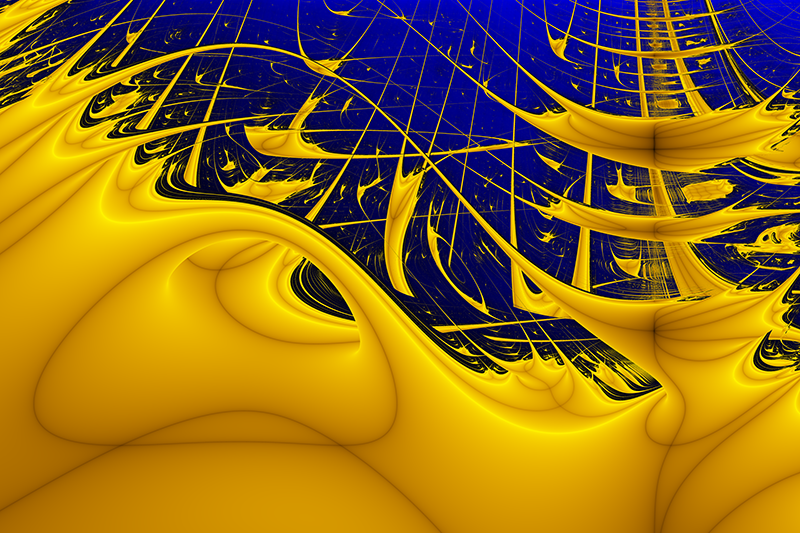Tackling the Puzzle of Our Solar System’s Stability
Shortly after discovering the law of gravity, Isaac Newton wondered whether it would allow our Solar System to remain stable. At face value, the problem seems trivial. The gravitational perturbations the planets exert on one another are at least 1000 times smaller than the dominant central force from the Sun. The catch is that the relevant timescales are astronomical. Planetary systems like our own live for roughly 10 billion years (10 Gyr) before their central star runs out of nuclear fuel. Do these tiny gravitational tugs then simply average out, or can their effects build up and lead to instabilities and planetary collisions over such long timescales?
In the 1780s, Pierre-Simon Laplace and Joseph-Louis Lagrange thought they had proved the eternal stability of the Solar System by finding an approximate solution after expanding the expression for the planets’ average gravitational effect on one another to lowest order in the orbits’ small eccentricities and inclinations. A century later, Henri Poincaré discovered that our Solar System is chaotic, demonstrating that these neglected, higher-order terms cannot be ignored, and collisions may eventually occur (for more on the problem’s history, see Research News: The Final Piece in the Solar System-Stability Puzzle?). But the practical question of how long such small effects would need to build up to cause dynamical instabilities had to await the advent of computers.
A recent insight is that, loosely speaking, the orbits of the outer, more massive giant planets remain well behaved over the age of the Solar System [1]. The simplest picture then follows the orbits of the terrestrial planets (Mercury, Venus, Earth, and Mars) and models the chaos as driving a random walk in their eccentricities and inclinations—until the orbits become so elliptical that they go unstable. Every chaotic dynamical system has a characteristic timescale over which predictability is lost, called the Lyapunov timescale. This parameter corresponds to the time between steps in the random walk [2]. The model provides a simple theoretical framework; unfortunately, it suffers from an important tension.
In 1989, Jacques Laskar demonstrated that the Lyapunov timescale for the terrestrial planets was only a few million years (Myr) [3]. Yet in a dramatic suite of numerical orbit integrations requiring 8 million CPU hours, Laskar and Mickaël Gastineau of the Paris Observatory found in 2009 that dynamical instabilities, while possible, are rare [4]. Specifically, they found that Mercury has an approximately 1% chance of colliding with the Sun or Venus in the Sun’s remaining 5 Gyr lifetime. How are we to reconcile these two facts? In a picture where the inner Solar System is taking random steps every few Myr near a cliff of instability, how does it typically survive a thousand iterations without falling off? Now Federico Mogavero, Nam Hoang, and Laskar—all affiliated with the Paris Observatory—have presented a persuasive answer [5].
The simple random-walk model discussed above does not account for an important complication: dynamical systems have different Lyapunov timescales depending on the direction traversed in phase space [6]. The fact that the Solar System is taking steps in its random walk every few Myr simply reflects the direction of fastest chaos. The researchers argue that Mercury’s survival over billions of years suggests that this maximally chaotic direction is not particularly perilous. After all, making many random steps in a direction parallel to the edge of a cliff is hardly dangerous.
In their new study, the team used numerical methods to demonstrate that the inner Solar System’s set of Lyapunov timescales in different directions in phase space span 2 orders of magnitude. The directions represent diagonals in eccentricity-inclination space, meaning that a step changes a particular combination of the four terrestrial planets’ eccentricities and inclinations rather than any one of those quantities individually. The researchers then focused on the three most sluggish directions—those along which the inner Solar System takes random steps only every 0.1–1 Gyr. They thus identified three combinations of the eccentricities and inclinations that act as quasiconserved quantities, only weakly modified by the interplanetary perturbations on long timescales.
Additionally, Mogavero, Hoang, and Laskar demonstrate that the chaotic evolution in these slow directions constitutes the rate-limiting step to instability. In an elegant numerical experiment, they slightly modified the governing differential equations to conserve these three particular combinations. That is, they shut down any evolution along these three directions. In this dynamical system that’s nearly identical to the real Solar System, they show numerically that the chance of losing Mercury becomes negligible within the Sun’s remaining lifetime. Accordingly, the long timescale for Mercury’s demise is set by the slow, chaotic evolution of three particularly sluggish combinations of the terrestrial planets’ eccentricities and inclinations. This simultaneously explains the relative stability of our Solar System and clears a path toward simpler quantitative models for these rare but violent cataclysms.
While the discussion so far has focused on the Solar System’s surprising stability, Mercury’s existence is remarkably precarious. If Jupiter’s orbital eccentricity were slightly larger, the probability of losing Mercury over the Sun’s remaining lifetime would be close to one [7]. Our innermost planet lives on a knife’s edge of stability. Understanding these chaotic dynamics thus has important implications for how instabilities might have shaped planetary systems around other stars and influenced their observed demographics. We will likely never have sufficient precision on the masses and orbital parameters in such systems for an analysis like that of Mogavero, Hoang, and Laskar. Nevertheless, understanding our own Solar System in detail is an important theoretical step before generalizing the approach to statistically account for observationally uncertain parameters.
Stepping back, it would also be deeply unsatisfying if Mercury’s vulnerability to a slightly more eccentric Jupiter were due to pure chance. Rather, this fact is surely telling us something important about the planet formation process. Perhaps planetary systems form with more planets than we see today and with more closely spaced orbits, as Laskar proposed [8]. Such configurations would be unstable and lead to collisions and mergers that leave behind more widely separated orbits. The survivors could then go on to destabilize themselves. In this scenario, planetary systems repeatedly rearrange into ever-longer-lived configurations with fewer bodies—a stark contrast to the static picture evoked by posters of our Solar System in children’s classrooms.
Perhaps then, as observers who have arrived partway through this chaotic dance, we should not be surprised to find our own system on the edge of a knife. When Laskar elucidated the above scenario in 1996, our single Solar System rendered it a mostly philosophical speculation. The subsequent discovery of over one thousand exoplanetary systems now provides a tantalizing opportunity to test it.
References
- F. Mogavero and J. Laskar, “Long-term dynamics of the inner planets in the Solar System,” Astron. Astrophys. 655, A1 (2021).
- K. Batygin et al., “Chaotic disintegration of the inner solar system,” Astrophys. J. 799, 120 (2015).
- J. Laskar, “A numerical experiment on the chaotic behaviour of the Solar System,” Nature 338, 237 (1989).
- J. Laskar and M. Gastineau, “Existence of collisional trajectories of Mercury, Mars and Venus with the Earth,” Nature 459, 817 (2009).
- F. Mogavero et al., “Timescales of chaos in the inner Solar System: Lyapunov spectrum and quasi-integrals of motion,” Phys. Rev. X 13, 021018 (2023).
- S. Strogatz, Nonlinear Dynamics and Chaos (CRC Press, Boca Raton, FL, 2018)[Amazon][WorldCat].
- N. Hussain and D. Tamayo, “Fundamental limits from chaos on instability time predictions in compact planetary systems,” Mon. Not. R. Astron. Soc. 491, 5258 (2019).
- J. Laskar, “Marginal stability and chaos in the solar system,” Symp. - Int. Astron. Union 172, 75 (1996).





